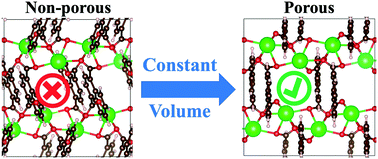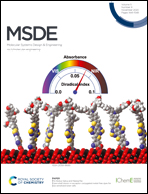Design principles for the ultimate gas deliverable capacity material: nonporous to porous deformations without volume change†
Abstract
Understanding the fundamental limits of gas deliverable capacity in porous materials is of critical importance as it informs whether technical targets (e.g., for on-board vehicular storage) are feasible. High-throughput screening studies of rigid materials, for example, have shown they are not able to achieve the original ARPA-E methane storage targets, yet an interesting question remains: what is the upper limit of deliverable capacity in flexible materials? In this work we develop a statistical adsorption model that specifically probes the limit of deliverable capacity in intrinsically flexible materials. The resulting adsorption thermodynamics indicate that a perfectly designed, intrinsically flexible nanoporous material could achieve higher methane deliverable capacity than the best benchmark systems known to date with little to no total volume change. Density functional theory and grand canonical Monte Carlo simulations identify a known metal–organic framework (MOF) that validates key features of the model. Therefore, this work (1) motivates a continued, extensive effort to rationally design a porous material analogous to the adsorption model and (2) calls for continued discovery of additional high deliverable capacity materials that remain hidden from rigid structure screening studies due to nominal non-porosity.



 Please wait while we load your content...
Please wait while we load your content...
